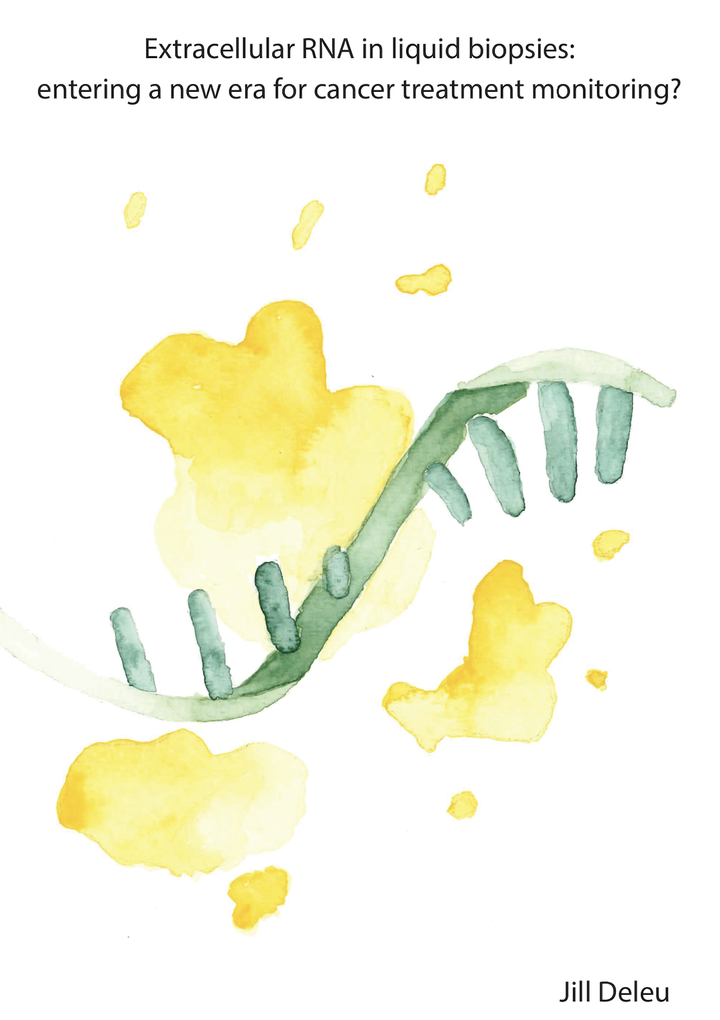Extracellular RNA in liquid biopsies: entering a new era for cancer treatment monitoring?

Abstract Neuroblastoma is the most frequently occurring extracranial childhood tumor, accounting for 15% of pediatric cancer-related deaths. While five-year survival rates have improved overall, a discrepancy exists between the less harmful low-risk variants and the high-risk neuroblastoma groups. Cure rate improvements in high-risk neuroblastoma patients are disappointingly low despite intensive multimodal therapies, with more than half of cases leading to disease progression and a fatal outcome. Pediatric oncologists still face a major challenge in treating neuroblastoma, and there is an urgent need for early detection of therapy non-response and to understand why some patients respond to therapy while others do not.
Monitoring a tumor’s response can be aided by a thorough analysis of transcriptomic changes that occur during treatment. Yet, obtaining multiple samples of the tumor tissue is impractical because it is invasive and requires prior sedation of the patient. Additionally, tissue biopsies often involve a needle biopsy, which only captures a small portion of the primary tumor. Therefore, temporal and spatial tumor heterogeneity is not adequately captured with tissue biopsies. Alternatively, liquid biopsies have emerged as a promising approach for monitoring treatment responses. Liquid biopsies contain various biomarkers, such as cell-free DNA, extracellular RNA (e.g., microRNA, messenger RNA, long non-coding RNA and circular RNA), proteins, extracellular vesicles and tumor-educated platelets. In this thesis, my goal was to assess the potential of using circulating extracellular RNA found in serum and plasma as a means of monitoring treatment responses. Due to the difficulty in obtaining patient samples and differentiating between tumor and host responses in human samples, my research concentrated on improving xenograft models to investigate a tumor’s reaction to treatment using liquid biopsies. To be more precise, by injecting a human tumor into mice, it is possible to distinguish between the tumor and host response to treatment since they originate from two different species, namely humans and mice, respectively.
The study conducted by Van Goethem et al. illustrated that serum microRNAs obtained from orthotopically engrafted neuroblastoma xenograft models can indicate the level of tumor burden as well as the pharmacodynamic response to idasanutlin therapy (paper in addendum). To assess the potential of the total extracellular RNA as a biomarker in xenograft models, a computational pipeline was optimized to distinguish between murine (host) and human (tumoral) reads. The pipeline was then applied to various plasma fractions and platelets, revealing that the tumoral signal in blood-based liquid biopsies is not mainly present in platelets. Instead, the platelets have a high content of host-derived extracellular RNA. To reduce the background host signal, I put forward platelet-depleted plasma for monitoring the treatment response of a tumor (paper 1). During my initial endeavor to assess the extracellular RNA response to idasanutlin treatment, I was unable to observe any tumoral responses due to the low amount of tumoral extracellular RNA present in the bloodstream. However, I was able to identify a definite correlation between the size of the tumor at the time of sacrifice and the level of tumoral extracellular RNA present in the bloodstream. Moreover, while searching for additional factors that could influence the extracellular RNA load in circulation, I discovered significant variations among the models that were injected with different cell lines. Additionally, the injection site also played a potential role in the quantity of tumoral extracellular RNA in circulation (manuscript under review).
Relying solely on extracellular RNA as a biomarker for predicting and monitoring treatment responses may not be the most effective approach. The field of extracellular RNA is less explored than cell-free DNA because extracellular RNA is more susceptible to degradation and therefore sensitive to pre-analytical factors. However, extracellular RNA has the advantage of being more dynamic, allowing for real-time monitoring of treatment responses and the identification of highly expressed genes, even when the tumor has low levels of DNA shedding into circulation. To analyze both cell-free DNA and extracellular RNA in limited volumes of murine plasma, it is highly desirable to co-purify both types of nucleic acids from the same sample. In paper 2, I compared the performance of different extracellular RNA/cell-free DNA co-purification kits and demonstrated that the combined quantification can result in increased analytical sensitivity.
In conclusion, the findings from this thesis have opened new avenues for further assessment of the transcriptomic and genomic responses in biofluids obtained from xenograft models after therapy. These findings could have a crucial role in assessing the effectiveness of treatments for neuroblastoma patients.

